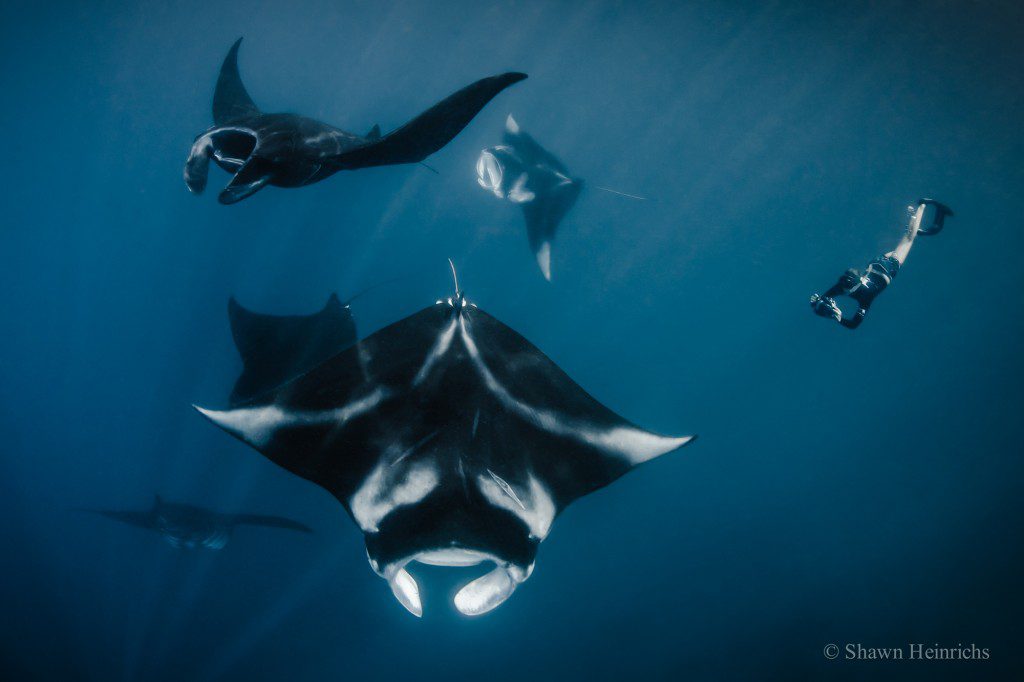- About
- News-Topics
- Galleries
- Partners
 Conservation International (CI)
Conservation International (CI) Coral Reef Alliance (CORAL)
Coral Reef Alliance (CORAL) Indonesia Biodiversity Research Center (IBRC)
Indonesia Biodiversity Research Center (IBRC) Kalabia Conservation Education Program & Yayasan Kalibia Indonesia (YKI)
Kalabia Conservation Education Program & Yayasan Kalibia Indonesia (YKI) The Manta Trust
The Manta Trust Misool Baseftin
Misool Baseftin National Oceanographic and Atmospheric Administration (NOAA)
National Oceanographic and Atmospheric Administration (NOAA) Papua Turtle Foundation (YPP)
Papua Turtle Foundation (YPP) Raja Ampat Research and Conservation Centre (RARCC)
Raja Ampat Research and Conservation Centre (RARCC) Konservasi Indonesia
Konservasi Indonesia RARE
RARE Sea Sanctuaries Trust
Sea Sanctuaries Trust Seventy Three
Seventy Three Starling Resources
Starling Resources Stay Raja Ampat
Stay Raja Ampat The Nature Conservancy (TNC)
The Nature Conservancy (TNC) UNIPA – Universitas Negeri Papua, or the Papua State University (UNIPA)
UNIPA – Universitas Negeri Papua, or the Papua State University (UNIPA) WildAid
WildAid WWF – Indonesia
WWF – Indonesia WWF – US
WWF – US Blue Ocean Network
Blue Ocean Network Raja Ampat SEA Centre
Raja Ampat SEA Centre Child Aid Papua
Child Aid Papua Planet Deep
Planet Deep The Sea People
The Sea People Jangkar – Indonesia Liveaboard Association
Jangkar – Indonesia Liveaboard Association Reef Guardian
Reef Guardian EPI
EPI Thrive
Thrive- Close
- Resources
- Visitor Info
- Maps
- Raja Ampat Maps
- Triton Bay
- Cenderawasih Bay
- Bomberai / Fakfak
- Marine Protected Areas
- MPA: Pratinjau KKP Raja Ampat
- MPA: Perairan Kepulauan Ayau Asia
- MPA: Teluk Mayalibit
- MPA: Selat Dampier
- MPA: Perairan Kepulauan Misool
- MPA: Perairan Kepulauan Kofiau Boo
- MPA: Perairan Kepulauan Fam
- MPA: Kaimana MPAs
- MPA: Taman Pesisir Teluk Nusalasi
- MPA: Taman Pesisir Teluk Berau
- MPA: Jeen Womom Coastal Park
- MPA: Cendrawasih Bay National Park
- MPA: Kepulauan Padaido
- MPA: KKP Maksegara (Makbon)
- MPA: TCBFM Teluk Bintuni
- MPA: KKP Sorong Selatan
- MPA: Taman Wisata Perairan Raja Ampat
- Close

Manta ID Database
How It Works
The Indonesian Manta ID Website is a visual gallery of manta rays that have been individually recognised in Indonesia using photo-identification. It was created to give you the opportunity to meet Indonesia’s manta rays, contribute your own manta ray sightings, and for us to share with you what we have learned from our research.
Through scientific research the Indonesian Manta Project works to create a deeper understanding of Indonesia’s manta ray populations. We employ various research techniques, including, photographic-identification, acoustic and satellite tagging, genetic analysis, community interviews and fishery surveys, the combination of which enables us to piece together key data, creating a nationwide knowledge-base of manta ray distribution, population ecology and threats.
Use this site to browse through images of all of the manta rays that we have identified to date and get to know a little more about them, such as:
- Whether male or female
- Pregnancies
- Their size
- Location and frequency of sightings
- Sexual maturity
- Injuries and scarring
- Whether they have been satellite or acoustic tagged
Photo-Identification
Each and every manta ray has a unique pattern of spots, blotches and shading on their underside (ventral surface), and we use these patterns to identify individuals – much like a fingerprint is used to identify individual humans. Photographing these patterns is a simple and non-invasive technique that scientists use to learn more about manta populations. By cataloging photo-IDs along with information about each sighting (such as date, location and environmental conditions), over time we are building a comprehensive database of individual manta rays that will allow us to:
- Estimate population size;
- Understand sex ratios;
- Identify any seasonal trends;
- Understand habitat use;
- Document movements and distribution;
- Estimate recruitment and mortality rates (birth and death rates);
- Investigate growth rates;
- Observe individual and social behaviour.
Manta Ray Colour Morphs:
In the majority of cases, mantas have a black dorsal (topside) surface and a white ventral surface – we call this colour morph “chevron”. However, in both species there are also a few individuals who are coloured black almost all over, and we call this colour morph “black” or “melanistic”. Mantas exhibiting this colour form are completely black dorsally and almost completely black ventrally, with patches of white often left only around the gill areas.

Chevron colour morph reef manta ray (ventral side).

Black colour morph reef manta ray (ventral side).
There are two different manta ray species; the reef manta ray (Manta alfredi) and the oceanic manta ray (Manta birostris), and Indonesia is home to both. To the untrained eye these two species look very similar, but there are some subtle characteristics that can help you distinguish between the species.
Oceanic Manta Ray – Manta birostris
On an oceanic manta ray, its underside (ventral surface) is almost absent of spots except for a small central cluster, which may be found on the manta’s belly, but typically not between the gills. Manta researchers use these belly markings as the primary means of distinguishing individual manta rays of this species. Oceanic manta rays often also have dark colouration around and inside their mouths and on the edge of their fins on their underside. Chevron oceanic mantas usually have white patches on their backs. These ‘shoulder’ patches form a ‘T’ pattern and there is a distinctive black/white divide, as opposed to a gradient. Many of the oceanic manta rays we see in Indonesia are very pale in colouration, with lots of white on their dorsal surface and sometimes almost completely white on their underside.

Oceanic manta ray ventral side with primary ID area highlighted.

Oceanic manta ray dorsal side.
On a reef manta ray, unique spot patterning can be found all over the ventral surface. Some individuals are almost completely covered in spots, while in others there is almost a complete absence of spots. Manta researchers use the markings between the gill slits as the primary ID area for this species. Chevron-morphed reef mantas usually have white patches on their backs. These ‘shoulder’ patches form a ‘Y’ pattern just on top of the manta’s head, fading into the black colouration on their backs.

Reef manta ray ventral side with primary ID area highlighted.

Reef manta ray dorsal side.
How To Take a Manta Photo-ID
Every single manta ray photo-ID and accompanied sighting information is an important piece of data, enabling scientists to unravel the mysteries surrounding manta rays.
Help us better understand and conserve Indonesia’s vulnerable manta ray populations by contributing your manta photo-IDs. Learn how to take the perfect manta ray identification photo by following these simple steps:
Step 1: If you encounter a manta ray while diving or snorkeling make sure you adhere to general and site-specific manta ray codes-of-conduct and interaction guidelines. Never chase a manta; not only will it stress the animal but it is also likely to cause the manta to swim away and thus reduce the quality and length of your manta encounter.
Step 2: Stay calm and assess the manta ray’s behaviour, and try to position yourself below the manta. If you are patient, manta rays will often approach you out of curiosity.
Step 3: Aim your camera at the manta ray’s underside. If you can, try to take a photo/video that includes its entire underside. However, manta ray encounters are often brief and it might not be possible to fit the entire manta ray into the frame; in this case it is most important to aim for the primary ID area (between the gills in the reef manta, and on the belly of the oceanic manta).
 Standardised ID area for manta rays.
Standardised ID area for manta rays.How to Use this Site
1) Browse the Manta ID Database
- Go to the “Manta Database” page.
- Either browse the database or search for specific mantas by species, colour morph or spots.
- Click on a manta photo to reveal all details about this manta.
2) Submit a Manta ID:
- Capture a photo clearly showing the manta rays underside.
- Crop your photo to include only the manta (be careful not to crop the wings or tail off).
Go to the “Submit Manta Sighting” page
- Upload your image.
- Fill in the form.
- Optional: Search the database to see if your manta is new or a re-sighting (both are extremely valuable, and your efforts to help match your photo-ID to those in the database are greatly appreciated by our team!).
- Submit your photo-ID!
Adopt a Manta (“Mengadopsi Manta”)
You can join our conservation effort by adopting one of the manta rays that we have identified and listed in our database. When you adopt a manta, you will have the opportunity to name it and you will be sent a “Certificate of Adoption” and photo print of your adopted manta ray. Additionally you will be sent on going updates whenever new information and sightings are revealed about “your” manta. 100% of the fee you pay to adopt your manta will go straight to supporting the conservation and research work of the Indonesian Manta Project.
To adopt a manta, all you have to do is click on the “Adopt Me” button under the manta you would like to adopt. If the manta ray you are drawn to has already been adopted, don’t worry, there are plenty of other beautiful mantas in need of adoption!
Adoption cost for one manta ray: US$75


The Bird’s Head Seascape Manta ID Database is Proud to be a part of the:
Twitter: @BHSeascape
Tags
Categories
- Berita Terkini
- Biodiversity
- Biodiversity/Taxonomy/Ecology
- Biogeography
- Bomb Fishing
- Cetacean
- Conservation/Science
- Diving
- Drone photography
- Ecology
- Education
- Forestry
- Manta Ray
- Marine Protected Area
- media
- Natives
- Nelayan bom
- Nickel Mining
- Painting
- Photography
- Ranger Patrol
- Re:wild
- Regional
- Research
- ReShark
- Scuba
- Snorkeling
- StAR
- Taxonomy
- Tourism
- Training
- underwater photography
- Underwater Videography
- Videography
Archives
Recent Posts
- Dr. Mark Erdmann becomes the Executive Director of ReShark and Shark Conservation Director at Re:wild
- Race to Mine Metals for EV Batteries Threatens Marine Paradise by *Victoria Gill (BBC)
- “Paradise Lost?” Greenpeace Investigation Revels Extent of Nickel Mining in Raja Ampat
- ReShark 5 Years of Impact
- Protecting our Oceans and Dive Sites while Benefiting Everyone
- Raja Ampat, Nickel Mining and YOU!
- Insights into the Visitations of Oceanic Manta Rays at Cleaning Stations on Coral Reefs in the Bird’s Head Seascape, Eastern Indonesia
- Sea Save Foundation and the Worldwide Coral Bleaching Event
- Announcing: Elasmobranch Institute of Indonesia/Yayasan Cendekiawan Hiu Pari Indonesia
- Journeying in Raja Ampat by Andrew Martinez
- Conservation in Raja Ampat: Mark Erdmann & A Holistic Approach by Don Silcock
- UNESCO: State of the Ocean Report 2024












